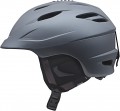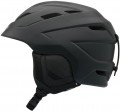Size
Sizes in which this helmet model is available.
A suitable size is determined primarily by the circumference of the head at its widest point, at the level of a couple of centimetres above the eyebrows. Sizes are indicated everywhere as standard —
XXS,
XS,
S,
M,
L,
XL,
XXL, etc. However, these designations may correspond to different actual helmet sizes for different manufacturers. For example, size S for one brand may be designed for a head circumference of 56 cm, and another — for 52 – 54 cm. In addition, men's and women's helmets (see "Gender and age") of the same size may also differ. Therefore, to select a helmet that is suitable for head circumference, it is best to use special tables that take into account the points described above.
Also, note that helmets of the same size can differ markedly in internal shape and other features. Therefore, when choosing, you need to take into account not only the size, but also the actual convenience — the helmet should sit tightly on the head, but not compress it.
Adjustable ventilation
The presence
of an adjustable ventilation system in the design of the helmet.
This adjustment is usually done by closing and opening the vent openings, sometimes with an intermediate, half-open position. In addition, some models allow you to separately close/open the front and rear openings. This allows you to customize the equipment to suit the situation. For example, in a frost or a snowstorm with a strong wind, ventilation can be covered so that snow does not fly into it or so that the head does not freeze; and when downhill it is better to leave open only the rear holes, for the same reasons.
Shell material
The material from which the shell is made is the outer hard shell of the helmet.
Many modern helmets use a plastic shell - this material is lightweight, well suited for objects of complex shape, and the necessary strength can be given to it through the use of special technologies. There are different types of plastic - for example, polycarbonate and ABS are quite popular. As a rule, the strength, reliability and quality of the plastic shell directly depend on the price category of the helmet.
There are also shells made of Kevlar or carbon fibre. Such materials usually combine very high strength with low weight, but they are very expensive and said strength is rarely critical. Therefore, such shells are typical mainly for expensive professional-level helmets.

